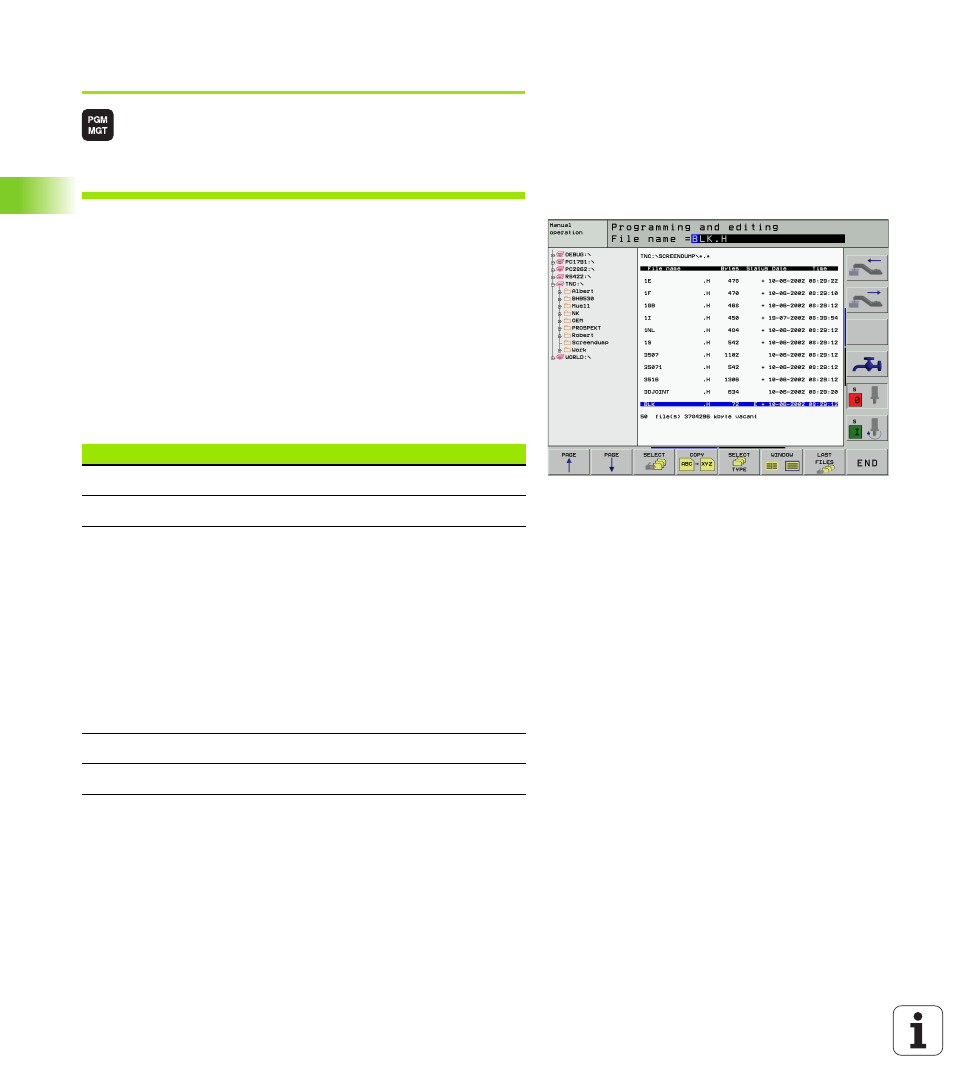Calling the file manager – HEIDENHAIN iTNC 530 (340 420) ISO programming User Manual
Page 80

80
4 Programming: Fundamentals of NC, File Management, Programming Aids, Pallet Management
4.4 A
d
v
a
nced File Manag
e
ment
Calling the file manager
Press the PGM MGT soft key: The TNC displays the
file management window. (The figure at right shows
the basic settings. If the TNC shows a different
screen layout, press the WINDOW soft key.)
The narrow window on the left
1
shows the available drives and
directories. Drives designate devices with which data are stored or
transferred. One drive is the hard disk of the TNC. Other drives are the
interfaces (RS232, RS422, Ethernet), which can be used, for example,
to connect a personal computer. A directory is always identified by a
folder symbol to the left and the directory name to the right. The
control displays a subdirectory to the right of and below its parent
directory. A box with the + symbol in front of the folder symbol
indicates that there are further subdirectories, which can be shown
with the –/+ key or ENT.
The wide window on the right
2
shows you all files that are stored in
the selected directory. Each file is shown with additional information,
illustrated in the table below.
Display
Meaning
FILE NAME
Name with up to 16 characters and file type
BYTE
File size in bytes
STATUS
E
S
M
P
File properties:
Program is selected in the Programming and
Editing mode of operation.
Program is selected in the Test Run mode of
operation.
Program is selected in a program run mode
of operation.
File is protected against editing and erasure.
DATE
Date the file was last changed
TIME
Time the file was last changed
1
2
